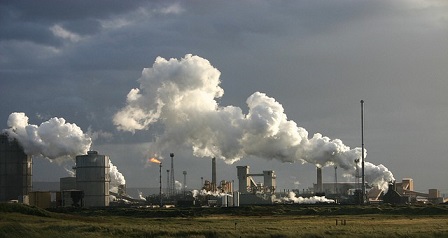By Our Correspondent
JAJPUR/JHARSUGUDA/ANGUL/BARBIL: The COVID-19 has minimised both air and water pollutions in Odisha’s mining and industrial zones. As a result of the reduction in consumption and generation, sources said that “drastic and clear reductions in pollution levels, which are a result of decreasing fossil fuel consumption in transportation, industries and energy sector.”“Most of this reduction came after the lockdown resulting in a drastic drop in NO2 (nitrogen dioxide)/pollution emissions/levels in urban areas,” sources said on Friday.
“During the lockdown period, no city entered the very poor category. Among the cities in poor category during the lockdown period, instances of Singrauli and Brajrajnagar in Jharsuguda in Odisha are found frequently. It is worth noting that Singrauli is home to several power plants, which are operational during the lockdown period and Brajrajnagar has in its vicinity numerous open-cast and underground coal mines,” explained the CPCB report.
Pollutions have also reduced in 2 industrial clusters of the State including in Jajpur and Jharsuguda while iron ore bearing areas like Joda, Koira, Barbil, Bonai, Rairangpur of Keonjhar-Sundargarh-Mayurbhanj and coal belt of Dhenkanal-Angul, Sambalpur-Jharsuguda-Sundargarh too witnessed less pollution barring cases of green laws violations by mining and industrial houses.
India’s top pollution watchdog, the Central Pollution Control Board (CPCB), also released an analysis on the impact of Covid-19 lockdown (March 25-April 15) on air quality in the country.NASA too released an image on April 21 that showed aerosol levels at a 20-year low for this time of year in northern India—an area which is among the most highly polluted regions of the world. Aerosols are tiny solid and liquid particles that are harmful to human health. Their source is both natural (like dust storms and forest fires) and man-made (like the burning of fossil fuels).
In the northern Indian region showed in the NASA map, human activities like motor vehicles, coal-based power plants etc are the primary reason behind the majority of aerosols but the 2020 lockdown has shown a clear reduction in such sources. However, the aerosol concentration is expected to go up in the upcoming weeks when the season of dust storms in the region begins. Human activities may contribute to it as well once the lockdown is lifted.
According to CPCB’s analysis, the nationwide lockdown has resulted in significant improvement in air quality in the country. It explained that the major sectors contributing to air pollution are transport, industries, power plants, construction activities, road dust, and residential activities etc.
“Under the nationwide lockdown, all transport services—road, air and rail—were suspended with exceptions for essential services. Educational institutions, industrial establishments and hospitality services were also suspended. As a result, air quality improvement has been noted in many towns and cities across the nation,” said the CPCB analysis.
According to the CPCB’s report, it was observed that about 78% of cities in the AQI bulletin are falling in “good and satisfactory categories in the lockdown phase, increasing from the average of 44% seen in the pre-lockdown phase.” CPCB prepares an AQI bulletin on a daily basis for more than 100 cities across India.
The pollution watchdog explained that “it may be reasonable to state that more cities have their air quality within national standards during the lockdown period.”






















